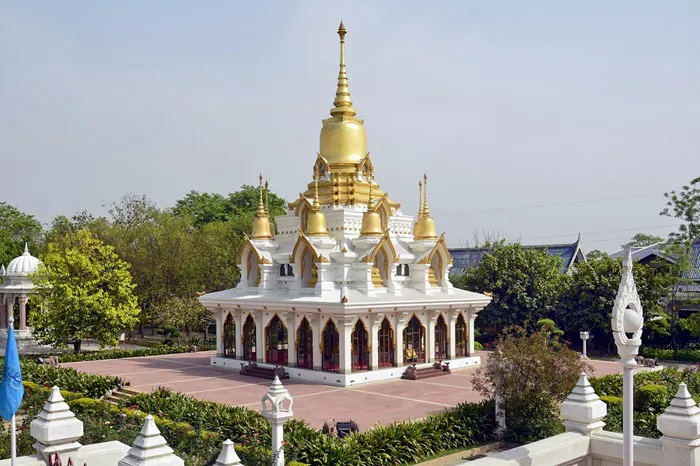South Korea redeployed firefighting helicopters on Wednesday after a helicopter crashed, injuring those on board. Authorities are struggling to contain wildfires raging in southeastern South Korea that have killed at least 24 people and destroyed a centuries-old Buddhist temple.
The helicopter crashed while battling a fast-spreading fire in Uiseong County, 125 miles (200 kilometers) southeast of the capital, Seoul, according to local fire officials. The pilot, the only person on board, has been confirmed dead.
Wildfires raging across the country’s southern region, fueled by dry air and strong winds, have killed at least 24 people, injured 26 and threatened several historical sites, according to the Ministry of the Interior and Safety.
Four civil servants sent to fight the fire were among the victims, authorities said.
The 1,300-year-old Gwanunsa Temple in Uiseong County, an important Buddhist landmark, was one of dozens of buildings destroyed, with the only structure that appeared intact being a ritual bell, according to photos from the Jogye Order of Korea.
Reports also said that some artifacts from the historic site, including a stone Buddha statue designated by the state as a seated Buddha that suppressed civilians, were moved to other temples before the fire hit, thus escaping the flames.
Firefighting helicopters had resumed fighting the blaze, which had burned more than 17,398 hectares (nearly 43,000 acres) of land as of Wednesday afternoon, officials said.
South Korean Prime Minister and Acting President Han Deok-soo said the fires were the worst in recent years in South Korea and caused “unprecedented losses.”
“We need to focus all our efforts on extinguishing wildfires for the rest of the week because we are worried that the losses caused by wildfires are unprecedented,” Han told reporters.
More than 10,000 firefighters, police officers and civil servants have been dispatched to several areas in the south since dozens of fires broke out over the weekend, authorities said.
Officials in Andong and other southeastern regions ordered residents to evacuate on Tuesday as strong and dry winds hampered efforts to contain the fires. As of Wednesday, the fires in Uiseong and Andong were 68% contained, according to authorities.
In recent days, the wildfires have spread to Uiseong County and have spread near the historic Hahoe Folk Village in Andong, a UNESCO World Heritage Site. Villagers have been asked to evacuate and firefighters have dropped water around the village to protect the traditional houses, known as “hanok.”
Sparks from a lawnmower on Friday sparked the wildfire in Sancheong County, South Gyeongsang Province, about 300 kilometers (186 miles) south of Seoul.
The South Korean government on Saturday declared a state of emergency for Ulsan City, South Gyeongsang Province and North Gyeongsang Province. The Korea Forest Service on Tuesday raised the nationwide wildfire warning to the highest “severe” level and urged local governments to allocate more resources for emergency response and tighten restrictions on access to forests and parks.
As of Wednesday, wildfires were still raging in several areas of North Gyeongsang Province, South Gyeongsang Province and the city of Ulsan.
Authorities have issued dry weather alerts for the affected areas and the wider southeast, but officials hope that rain on Thursday will help firefighters put out the blazes.
Wildfires are not uncommon in South Korea, especially in February, March and April, when the climate is the driest.
However, Han said the situation this year has been particularly bad, with a total of 244 forest fires reported, 2.4 times the same period last year.
“We sincerely request the public to pay special attention and cooperate in preventing forest fires so that our neighbors don’t suffer the same pain from the large-scale forest fires that occur every year,” Han Yong-chul said.

